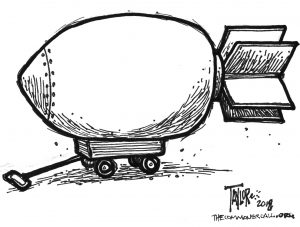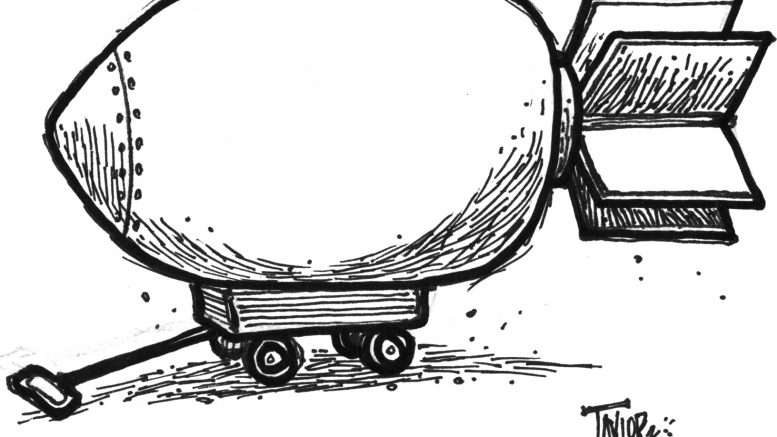
The Congo’s role in creating the bombs dropped on Hiroshima and Nagasaki was kept secret for decades, but the legacy of its involvement is still being felt today.
By Frank Swain
BBC (8/3/20)
“The word Shinkolobwe fills me with grief and sorrow,” says Susan Williams, a historian at the UK Institute of Commonwealth Studies. “It’s not a happy word, it’s one I associate with terrible grief and suffering.”
Few people know what, or even where, Shinkolobwe is. But this small mine in the southern province of Katanga, in the Democratic Republic of the Congo (DRC), played a part in one of the most violent and devastating events in history.
More than 7,500 miles away, on 6 August, bells will toll across Hiroshima, Japan, to mark 75 years since the atomic bomb fell on the city. Dignitaries and survivors will gather to remember those who died in the blast and resulting radioactive fallout. Thousands of lanterns carrying messages of peace will be set afloat on the Motoyasu River. Three days later, similar commemorations will be held in Nagasaki.
No such ceremony will take place in the DRC. Yet both nations are inextricably linked by the atomic bomb, the effects of which are still being felt to this day.
“When we talk about the Hiroshima and Nagasaki bombing, we never talk about Shinkolobwe,” says Isaiah Mombilo, chair of the Congolese Civil Society of South Africa (CCSSA). “Part of the second world war has been forgotten and lost.”
The Shinkolobwe mine – named after a kind of boiled apple that would leave a burn if squeezed – was the source for nearly all of the uranium used in the Manhattan Project, culminating with the construction of the atomic bombs dropped on Japan in 1945.
But the story of the mine didn’t end with the bombs. Its contribution to the Little Boy and Fat Man has shaped the DRC’s ruinous political history and civil wars over the decades that followed. Even today the mine’s legacy can still be seen in the health of the communities who live near it.
“It’s an ongoing tragedy,” says Williams, who has examined the role of Shinkolobwe in her book Spies in the Congo. She believes there needs to be greater recognition of how the exploitation and desire to control the mine’s contents by Western powers played a role in the country’s troubles.
Mombilo too is campaigning to raise awareness of the role played by the Congo in deciding the outcome of World War Two, as well as the burden it still carries because of this. In 2016, the CCSSA’s Missing Link forum brought together activists, historians, analysts, and children of those affected by the atomic bomb, both from Japan and from the DR Congo. “We are planning to bring back the history of Shinkolobwe, so we can make the world know,” says Mombilo.
Out of Africa
The story of Shinkolobwe began when a rich seam of uranium was discovered there in 1915, while the Congo was under colonial rule by Belgium. There was little demand for uranium back then: its mineral form is known as pitchblende, from a German phrase describing it as a worthless rock. Instead, the land was mined by the Belgian company Union Minière for its traces of radium, a valuable element that had been recently isolated by Marie and Pierre Curie.
It was only when nuclear fission was discovered in 1938 that the potential of uranium became apparent. After hearing about the discovery, Albert Einstein immediately wrote to US president Franklin D Roosevelt, advising him that the element could be used to generate a colossal amount of energy – even to construct powerful bombs. …
(Commoner Call cartoon by Mark L. Taylor, 2018. pen source and free for non-derivative use with link toe www.thecommonercall.org )
*****
The Power Of Journalism: Book Follows Reporter John Hersey, Who Uncovered Hiroshima Cover-Up

Morning Joe (8/6/20)
On the 75th anniversary of the bombing of Hiroshima, author Lesley M.M. Blume joins Morning Joe to discuss her new book ‘Fallout: The Hiroshima Cover-Up and the Reporter Who Revealed It to the World.’

